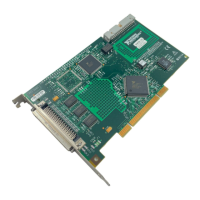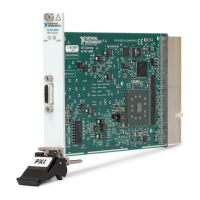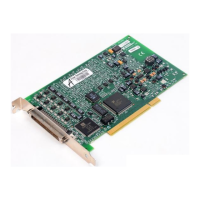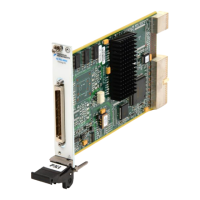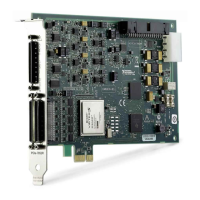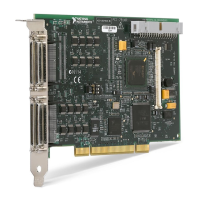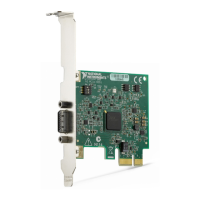Chapter 2 Device Overview
© National Instruments Corporation 2-7 NI 660x User Manual
Even if the Source pulses are long, the counter increments only once for
each source pulse.
Normally, the counter and Counter n Internal Output signals change
synchronously to the Source signal. With duplicate count prevention, the
counter value and Counter n Internal Output signals change synchronously
to the maximum onboard timebase.
Notice that duplicate count prevention should only be used if the frequency
of the Source signal is one-fourth of the maximum onboard timebase.
Enabling Duplicate Count Prevention in NI-DAQmx
You can enable duplicate count prevention in NI-DAQmx by setting the
Enable Duplicate Count Prevention attribute/property. For specific
information on finding the Enable Duplicate Count Prevention
attribute/property, refer to the help file for the API you are using. Refer to
the NI-DAQmx Help for more information.
When to Use Duplicate Count Prevention
Use duplicate count prevention for buffered measurements that use an
external CtrnSource signal and the frequency of the signal is less than or
equal to one-fourth of the maximum onboard timebase. Use this mode if
you are using a low frequency or you expect zero CtrnSource edges
between successive edges of the CtrnGate signal.
You should use duplicate count prevention if the following conditions are
true:
• You are making a buffered counter input measurement
• You are using an external signal (such as PFI x) as the counter Source
• The frequency of the external source is one-fourth of the maximum
onboard timebase
• You can have the counter value and output to change synchronously
with the maximum onboard timebase
In all other cases, you should not enable duplicate count prevention.
When Not to Use Duplicate Count Prevention
Use duplicate counter prevention only for buffered measurements with an
external CtrnSource signal. Do not use it when the CtrnSource signal is
greater than one-fourth of the maximum timebase.
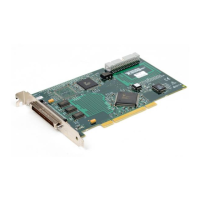
